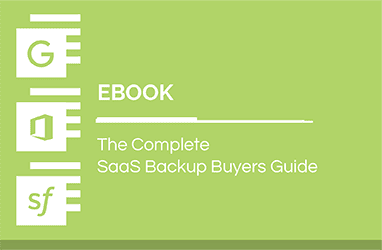Spanning Blog
Mar 11
2024
Mastering Salesforce Backup [Webinar Recap]
Our recent webinar explored the Salesforce data protection landscape and discussed why a third-party backup solution is critical for safeguarding your data.
Feb 28
2024
How to Back Up to Google Cloud
Backing up data to Google Cloud involves utilizing Google Cloud Storage to safeguard and preserve digital information. Learn how to accomplish it.
Nov 27
2023
What is a Disaster Recovery Plan? Importance, Types, Components & Benefits
A disaster recovery plan documents policies, procedures, and responsibilities to help businesses recover IT systems and data following a disaster.
Oct 03
2023
Your Microsoft 365 Data Recovery Timeline Simplified With Spanning’s New Feature
Most small and midsize businesses (SMBs) store their sensitive data — such as business strategies, proprietary intellectual properties, customer contracts and financial information — in Microsoft 365 platforms like Office, Mail, Teams, Calendar, OneDrive and SharePoint. However, storing and sharing data through SaaS applications like Microsoft 365 also creates many challenges for businesses. Disparate data […]
Aug 23
2023
All-Time Access to Salesforce Data Now Possible With Spanning’s Off-Platform Access
Learn how our new feature allows you to access your Salesforce backups from a dedicated address independent of the Salesforce platform.
Jan 20
2023
Backup Policy: What Should Be Included and Why Do You Need One?
A backup policy defines the set of policies, procedures and responsibilities to prevent data loss and maintain data integrity and availability. Learn more.
Dec 08
2022
SaaS Data Restoration Made Easy With Spanning Backup End User Self-Service
Find out how Spanning Backup End User Self-Service is the perfect remedy to the chaotic environment an organization experiences after a data loss incident.





